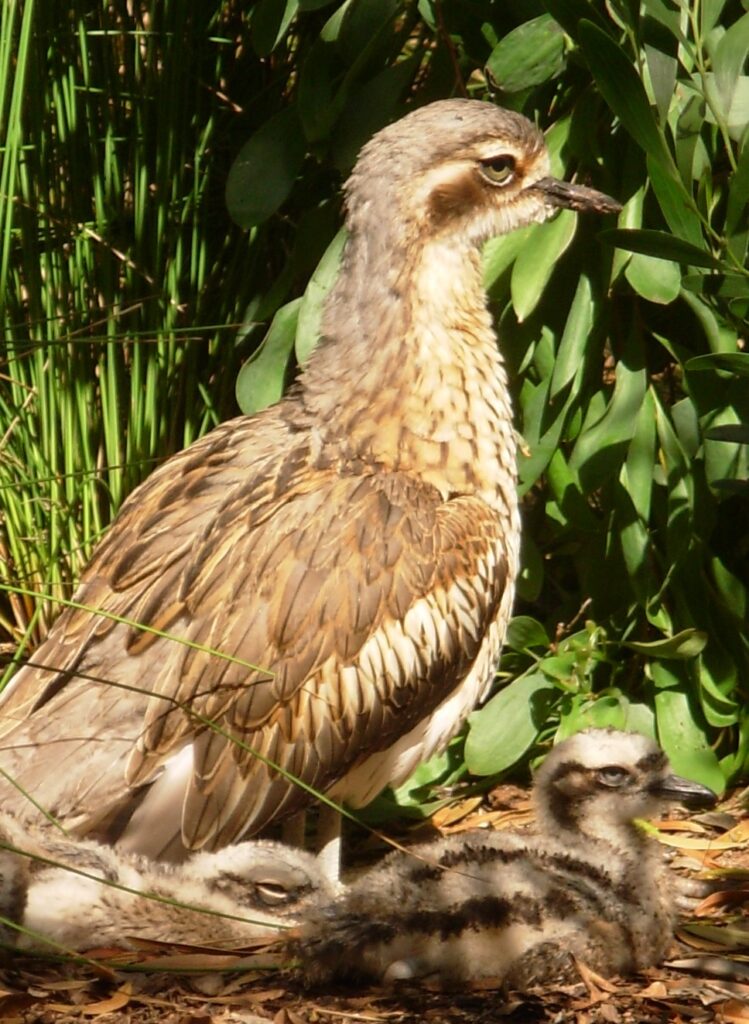A Bush Stone-curlew is back at Eaglehawk Waterhole, Bangham SA
As I write this story, I have only just got off the phone from Andy at NGT’s Eaglehawk Waterhole Restoration Reserve. Andy said he has been hearing the Bush Stone-curlew for the past two nights, calling around camp. This is such a relief as a Bush Stone-curlew was heard calling for the first time at Eaglehawk Waterhole back in September last year, and we wondered if it would hang around. This could be the same individual, or perhaps another curlew wandering the landscape looking for a suitable mate.
The Bush Stone-curlew (Burhinus grallarius) is a nocturnal bird with a wailing call and distinctive look. It rests and hunts on the ground, sitting still during the day and crouching or freezing when disturbed instead of flying away. This makes it vulnerable to predators like foxes. In South Australia, the population is declining, and it has increased in threatened status from rare to vulnerable with some local Limestone Coast populations in the last decade possibly now gone! Threats include the loss of its grassy woodland habitat, poor connectivity between other grassy woodlands, removal of fallen timber (which it needs to hide from predators and protect its nest), and introduced predators like foxes.
Hearing this rare bird at Eaglehawk Waterhole Restoration Reserve is quite special. This reserve was NGT’s first restoration reserve (protected in 2013 with assistance from the Native Vegetation Council and Nature Foundation SA). Much of the property was formerly grazed, but its recovering well. Eaglehawk Waterhole is an important conservation reserve in a little corner of SA (the Bangham district, north of Naracoorte) with higher native vegetation remnancy, highlighted as a priority zone for conservation activities in the Biodiversity Plan for the South East (Croft et al 1999). It’s fantastic that Eaglehawk Waterhole is now habitat for the rare Bush Stone-curlew.
So how else can we help curlews in the Bangham district hang on for the future?
We have previously toyed with the idea of a starting a semi-captive breeding program on the property, arranging a soft release area which would be fenced to keep the foxes out and allow breeding to occur, and then allowing the youngsters, when they can fly, to migrate into the surrounding reserve (meaning they will be past the most vulnerable stage in their life cycle). If the curlews that have managed to find the property keep hanging around, they are telling us we have suitable habitat – but we are simply lacking a nearby viable source population – so this idea should seriously be considered for putting into action.
Enjoy the short video below, showing curlews and their calls. NGT would be very interested to know if you are still seeing or hearing these birds in your area, particularly if you live in the Limestone Coast region, but also anywhere in southern Australia where the species has experienced a dramatic decline. Please get in touch with Bryan if you have any Bush Stone-curlew sightings or information to share.

